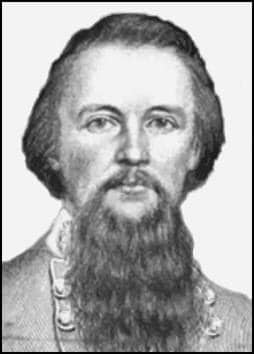George Burgwyn Anderson was an officer in the Confederate Army from North Carolina. He served in the military before and during the Civil War until his death during the Maryland Campaign.

Early Life
- George Burgwyn Anderson was the oldest son of William Anderson and Frances Eliza Burgwyn
- His father was a plantation slave owner in Hillsboro, North Carolina. As Anderson grew up, he preferred the military to the life of a plantation.
- He graduated at the top of his class at the Caldwell Institute and went on to attend the University of North Carolina.
- Soon, he received an appointment to the United States Military Academy and graduated 10th in his class.
- He was brevetted as a second lieutenant in the 2nd U.S. Dragoons and trained at the cavalry school at Carlisle Barracks, Pennsylvania.
- On March 21, 1854, he was promoted to second lieutenant.
Military Career
- One of George Burgwyn Anderson's first assignments sent him to California to assist in the survey of a proposed railroad route.
- On December 13, 1855, he was promoted to first lieutenant
- He served in the Utah War as the adjutant of his regiment. He was promoted to Captain for his success.
- In 1859, he was ordered to Louisville, Kentucky, as a recruitment officer. It was there that he met his wife, Mildred Ewing.
- He served another tour of duty from August 1858 - September 1859.
Civil War
- When the Civil War broke out, Anderson resigned his commission and returned to North Carolina.
- He was appointed colonel of the 4th North Carolina Infantry by John Willis Ellis, the Governor of North Carolina.
- He commanded a garrison at Manassas, Virginia, from October 14, 1861 - March 25, 1862.
- Anderson showed much ability at the Battle of Williamsburg, which led to a promotion to brigadier general.
- He saw action at the Seven Days Battles and Battle of Malvern Hill.
- At the Battle of Malvern Hill, he was wounded.
- While recovering from his wound, he was part of the defenses around Richmond, Virginia.
- He returned to active duty for the Maryland Campaign and participated in the Battle of South Mountain.
- He fought in the Battle of Antietam and defended a portion of the Sunken Road from repeated Union attacks.
- While leading his men, he was struck in the ankle with a Minie ball, which injured him badly.
- His foot became infected, and would need to have surgery to have his foot amputated.
- He died during the surgery from an infection
